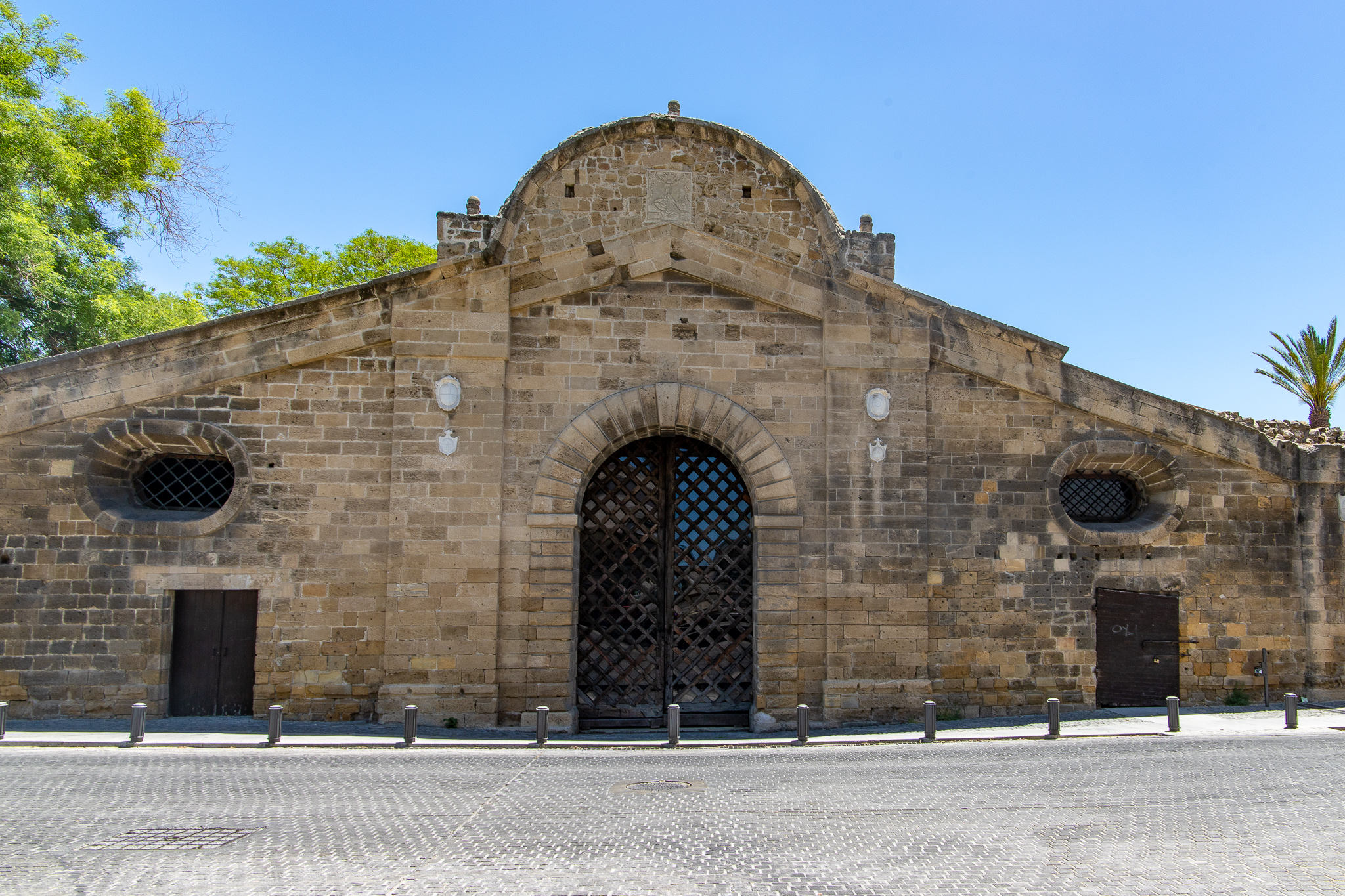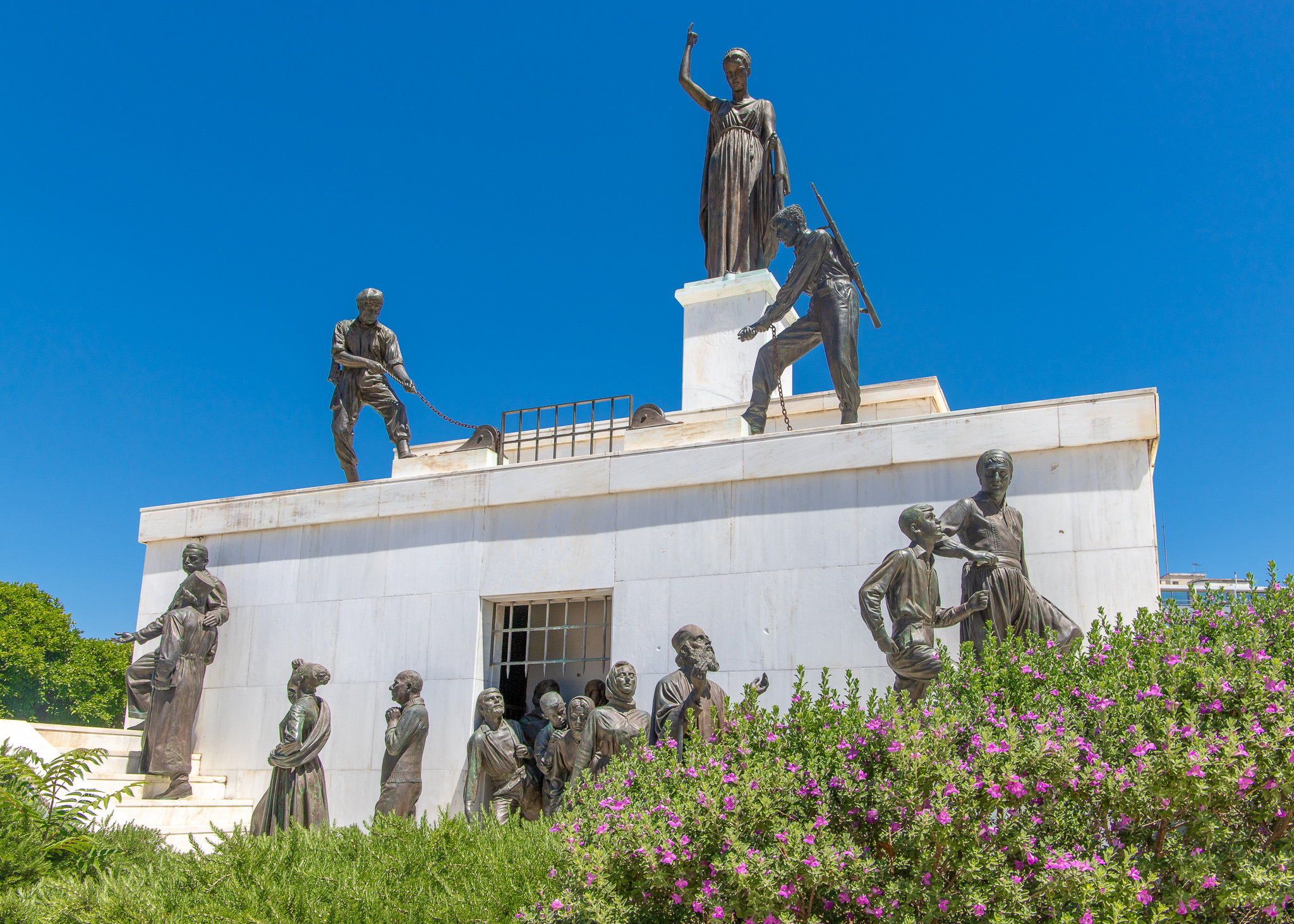In 1974, with genuine fears for the Turkish Cypriot minority after an attempted coup by the Greek government to unite Cyprus with Greece, Turkey’s military invaded Cyprus and captured 37% of the island. While initially these actions had the tacit approval of the international community, it ended up requiring the United Nations to step in and cease hostilities. Refusing to give up the occupied land, the Turkish Republic of Northern Cyprus was declared in 1983 - an act that has been recognised by no other country other than Turkey. The economic and human cost of over a third of the island’s inhabitants being displaced, from both sides, goes well beyond what any numbers can represent and is a genuine tragedy, of both the Greek and non-Greek variety.
Today, a UN buffer zone divides the island, informally called the Green Line. This also happens to be the same name as that given to part of Hebron Road that we travelled down when staying in East Jerusalem earlier in our trip. Given I’d also seen the only other Green Line that has existed since the end of World War 2, in Lebanon twenty years ago, I guess I can now say I have completed the Green Line trifecta.
To be honest, I can’t think of anything “green” about fences, razor wires, gun turrets and dead ground between two states. More so than Lebanon and Jerusalem, the whole concept conjures up images of the Cold War and the Inner German border which divided West and East Germany. In Cyprus, we saw our first evidence of this division when out on our boat trip. Here we cruised up to what must’ve been the “international” water border and looked across to what is referred to as the ghost city of Famagusta. Whilst we didn’t get that close on the boat trip, we were interested in seeing for ourselves more evidence of the splitting of this small but mighty country.
A bit of a struggle with the travel camera shooting this far on a hazy day but it looks a little less happening than the southern Cyprus coast
Since 2003 the border to Northern Cyprus has been officially open and you are able to venture across in both directions if you wish. However, doing so with a rental car is generally more problematic due to most companies denying insurance once over the border. For those who are keen to check out what life is like on the other side, there are regular “Famagusta ghost town tours” advertised throughout Cyprus, which will give you a firsthand account of what a city abandoned since 1974 looks like.
We didn’t quite manage to get ourselves organised enough to do the tour, but instead opted for a whirlwind tour of Nicosia. Depending on your view on whether Jerusalem is Israel’s/Palestine’s capital city or not, Nicosia is otherwise the only remaining divided capital city in the word. Here, somewhat fortuitously, we stumbled upon the what surely is now the artist’s neighbourhood of Taht-el-kale.
We’d been having trouble finding anything like a great café in the places we’d visited so far, most especially in Protaras and Agia Napa, which only seemed to serve up the same generic type greasy breakfasts catering to British holiday makers. In Taht-el-kale, however, we ran across a handful of funky cafes all within a couple of minutes of each other, including the very hip DOT which was doing a brisk trade on a Sunday morning. After knocking back some much needed coffee and a brunch that reminded us of something we’d get back home, we started exploring the quaint streets and homes which had much more in common with what we saw up in some of the mountain villages of Cyprus, rather than the tired and ramshackle accommodations we were used to seeing around Protaras and Paralimni.
Funky buildings and cars - who would’ve thought such a thing existed in Cyprus
While one door remains open the other three remain shut……
We’d been drawn to this part of Nicosia to see the famous Famagusta Gate, which has vaulted passages through the old city ramparts and a lovely façade. We had no idea what it was supposed to be, as we’d only done one quick TripAdvisor search, and as it turned out it was closed when we turned up anyway, so weren’t able to tell whether or not this was a great attraction or not.
Famagusta Gate
So, instead of checking out the Gate more fully, we instead ended up wandering around the neighbourhood, which ended up being a great idea. Taht-el-kale used to have one of the biggest Greek/Turkish mixed neighbourhoods prior to the county’s internal problems. Some evidence of this exists even today where the Taht-el-kale Mosque and its minaret stands in close proximity to the Panagia Chrysaliniotissa Church.
Taht-el-Kale Mosque
Panagia Chrysaliniotissa Church
In terms of age, the mosque is a relative newcomer, having been built in 1826, whereas Panagia Chrysaliniotissa (Our Lady of the Golden Flax), is believed to be the oldest Byzantine church in Nicosi, having been constructed in 1450 by Queen Helena Palaeologina. In a sign of thawing relations between the Greek and Turkish Cypriots, a service was conducted in the mosque in 2014, after having been closed for the past 51 years. This was made possible via an invitation from Archbishop Chrysostomos as part of the Religious Track of the Cyprus Peace Process to Mufti Atalay. Here’s hoping that this is a portend of things to come.
It didn’t take much more exploring before we abruptly came up against the actual UN buffer zone. It was quite weird as the concrete and barbed wire were not ten paces away from what were well looked after properties decorated gaily with flower pots and trees.
The view might hinder the selling potential of this particular property
Here, there was no one likely to shoot you, East Berlin-style, if we were to jump the fence but what made it that bit more surreal, was the considerately placed cat flap at the bottom of the gate. Obviously, the cats aren’t required to discriminate between the Turks and Greeks and could choose freely between who would best feed them!
Having seen the border up close and personal we’d pretty much called it a day when we drove past the Liberty Monument. This monument was erected in 1973 and commemorates the release from prison in 1959 of a number of Greek Cypriot nationalist guerrilla fighters called the Ethniki Organosis Kyprion Agoniston (EOKA). EOKA was an organisation who fought the British in 1955 to 1959 in order to gain self-determination and eventual union with Greece, in what they called Enosis. During this period, somewhere between 140 and 370 British soldiers are thought to have been killed by EOKA actions (the actual number is widely disputed). British policy during this period, in response, is believed to have involved systemic use, or at the very least turning a blind eye to the torture of prisoners captured. It also involved dramatically increasing the number of Turkish Cypriots in the police force such that they numbered 4,000 compared to less than 1,000 Greek Cypriots. These Turkish Cypriots were then required to combat EOKA, which understandably led to an ever worsening in relations between the two communities.
Controversial as the monument may be, the statues do capture the emotion on their faces very well.
The future between northern and southern Cyprus, is probably as bright as it’s been at any time since 1974. It is thought that Turkey currently maintains a garrison of somewhere close to 30,000 troops in Northern Cyprus, whilst Greece is also believed to have approximately 1,000 soldiers in the south. Talks aimed at reducing these numbers have already begun and ongoing negotiations continue to see genuine progress on the possibility of reunification of the island. Hopefully, one day this will eventuate, so that the Cypriots can once again live beside one another in peace.
For us, we also have to split, as it’s time to shuttle across to the tiny island of Malta for the next part of our adventure.










